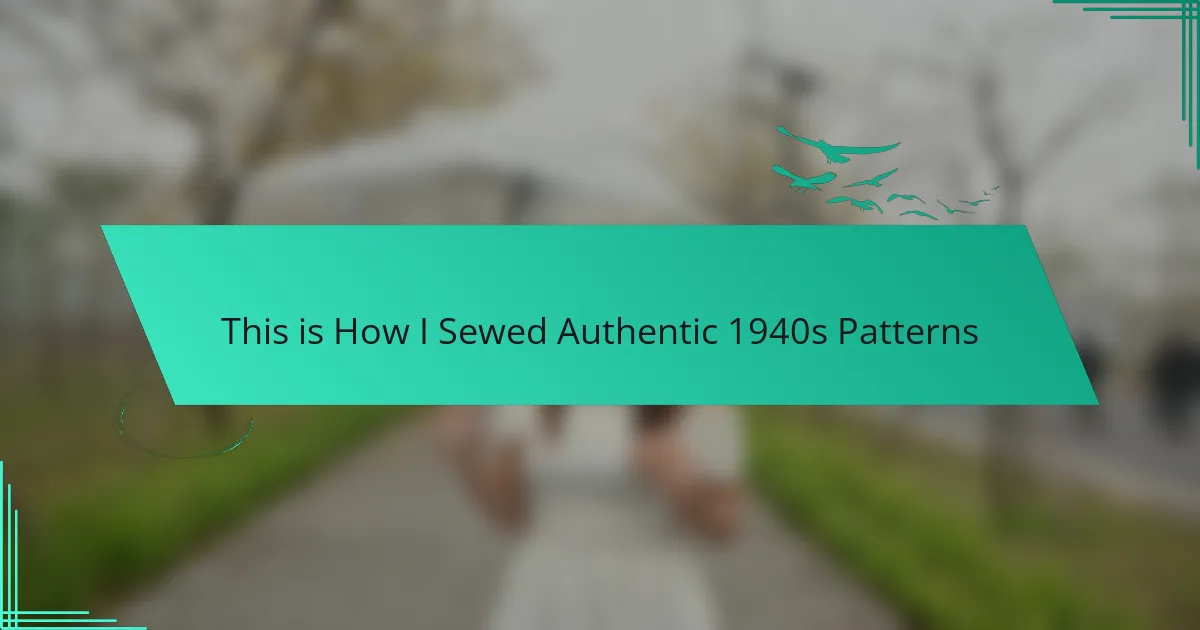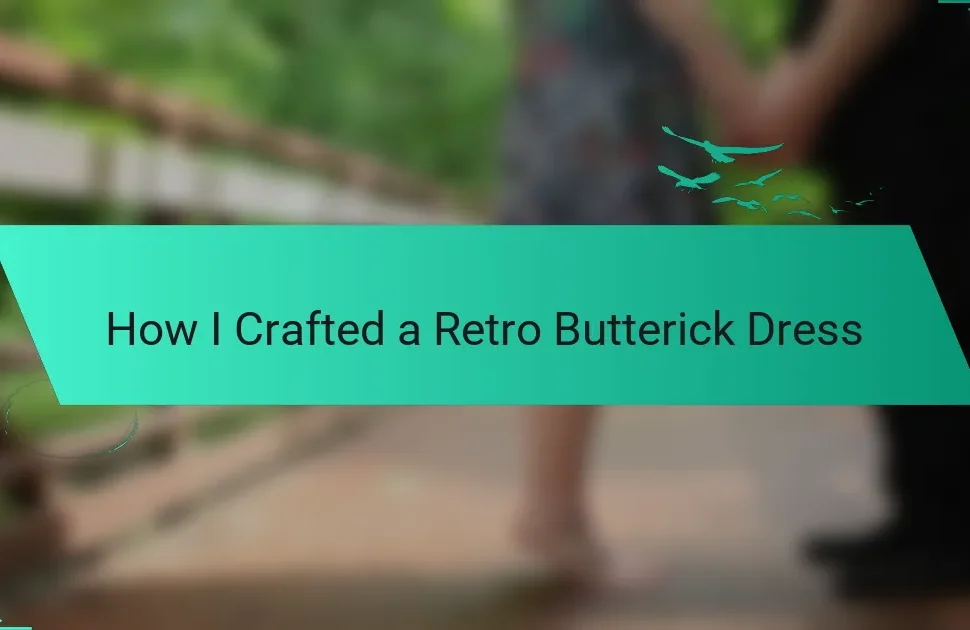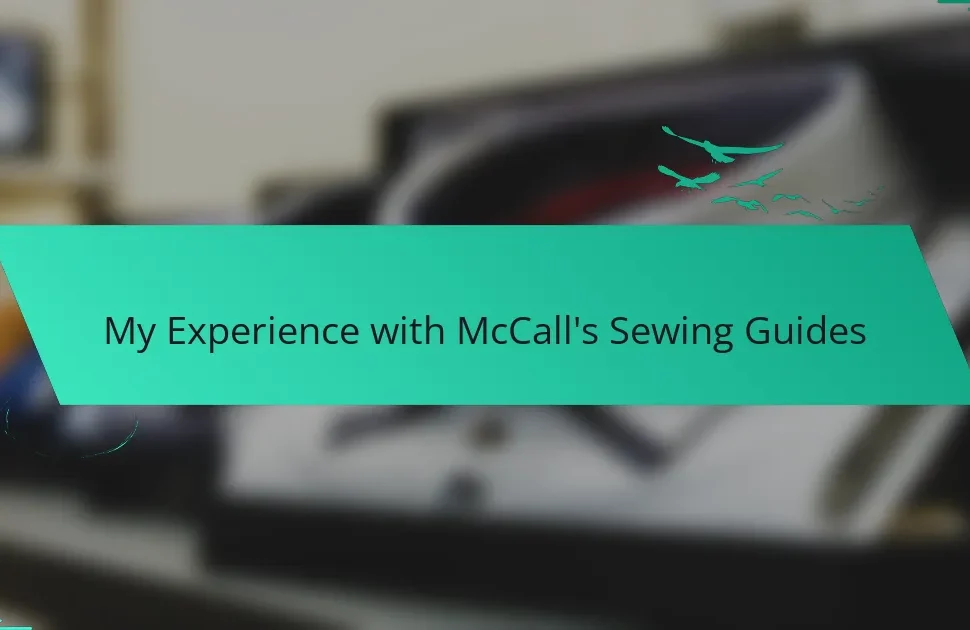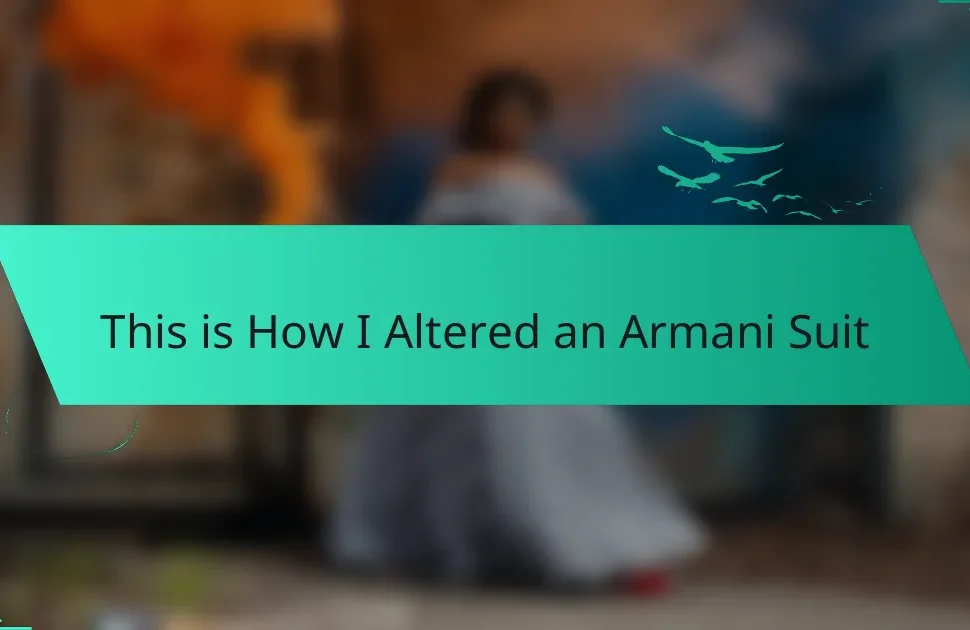Key takeaways
- Vintage fashion connects individuals to history and allows for personal expression through unique garments.
- 1940s fashion patterns emphasize tailoring and structure, blending practicality with elegance, making them distinct from modern patterns.
- Proper preparation of fabric, including washing and ironing, is essential for achieving an authentic vintage look.
- Incorporating hand finishing techniques and vintage notions enhances the authenticity and personal touch of vintage garments.
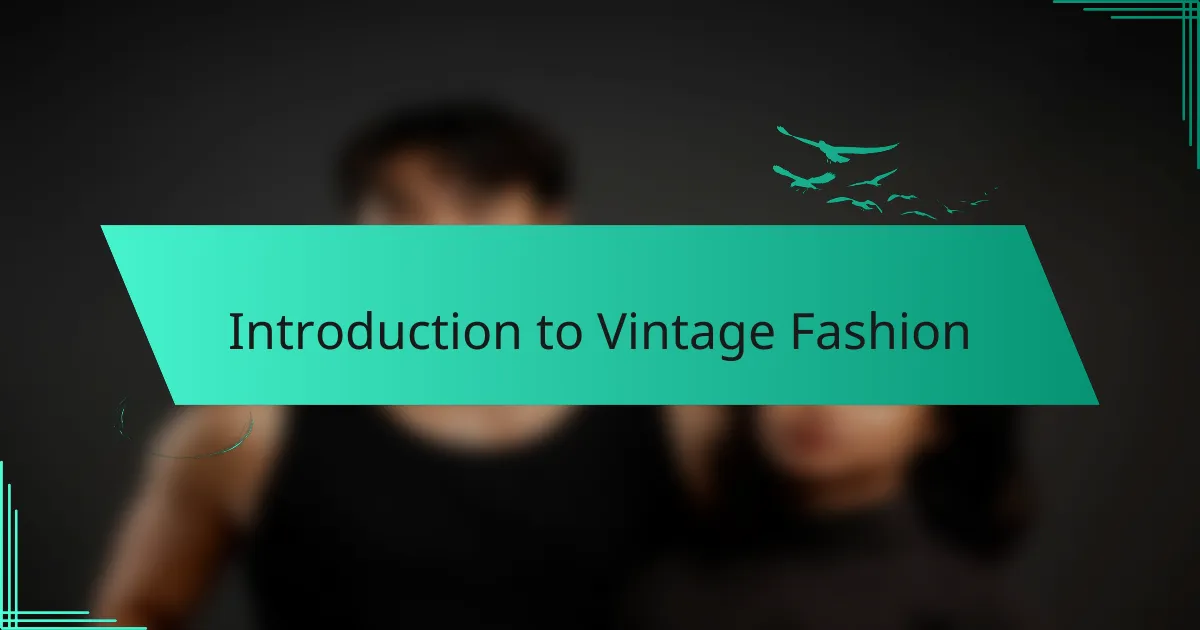
Introduction to Vintage Fashion
Vintage fashion is more than just clothing; it’s a way to connect with the past and express individuality. I remember the first time I slipped into a 1940s dress; it felt like stepping back in time, surrounded by the elegance and sophistication of a bygone era. Isn’t it fascinating how each era tells a unique story through its styles?
There’s a certain magic in sewing authentic patterns from decades gone by. It’s not just about fabric and thread; it’s about recreating history and bringing those beautiful designs back to life. Have you ever wondered how those styles made women feel empowered and glamorous during challenging times?
As I delve into vintage patterns, I often find myself imagining the women who wore those garments and the memories associated with them. Each stitch carries a piece of their story, making my crafting experience truly meaningful. Isn’t it rewarding to wear something that has such a rich history behind it?
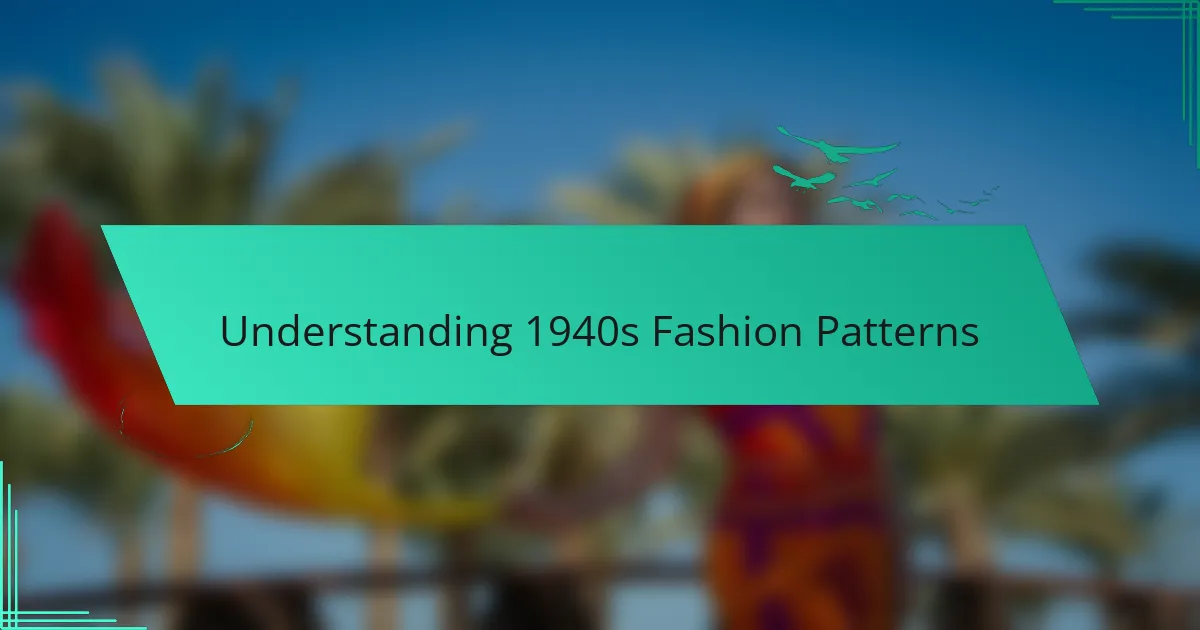
Understanding 1940s Fashion Patterns
Understanding 1940s fashion patterns is truly fascinating. The 1940s were a decade marked by both necessity and creativity, especially during World War II. I’ve found that patterns from this era cleverly blended practicality with style, often emphasizing structure and functionality over extravagance.
One of the key features of 1940s patterns is how they focused on tailoring, with defined waistlines and feminine silhouettes that still allowed for movement and comfort. I remember my first time sewing a 1940s dress; the sheet of paper I unfolded was like a time capsule, revealing the intricate darts and seam allowances that defined this elegant period.
In comparison to modern patterns, the instructions can sometimes be a bit less straightforward. Yet, there’s an undeniable charm in figuring them out, almost like a puzzle. The satisfaction of seeing those vintage lines come to life makes it all worth it.
| Feature | 1940s Patterns | Modern Patterns |
|---|---|---|
| Tailoring | Defined waistlines, structured silhouettes | More relaxed fit options, variety of styles |
| Instructions | Less step-by-step guidance, assumes some experience | Clear, detailed instructions with diagrams |
| Fabric Choices | Utilitarian fabrics, limited availability | Vast array of fabrics, influenced by trends |
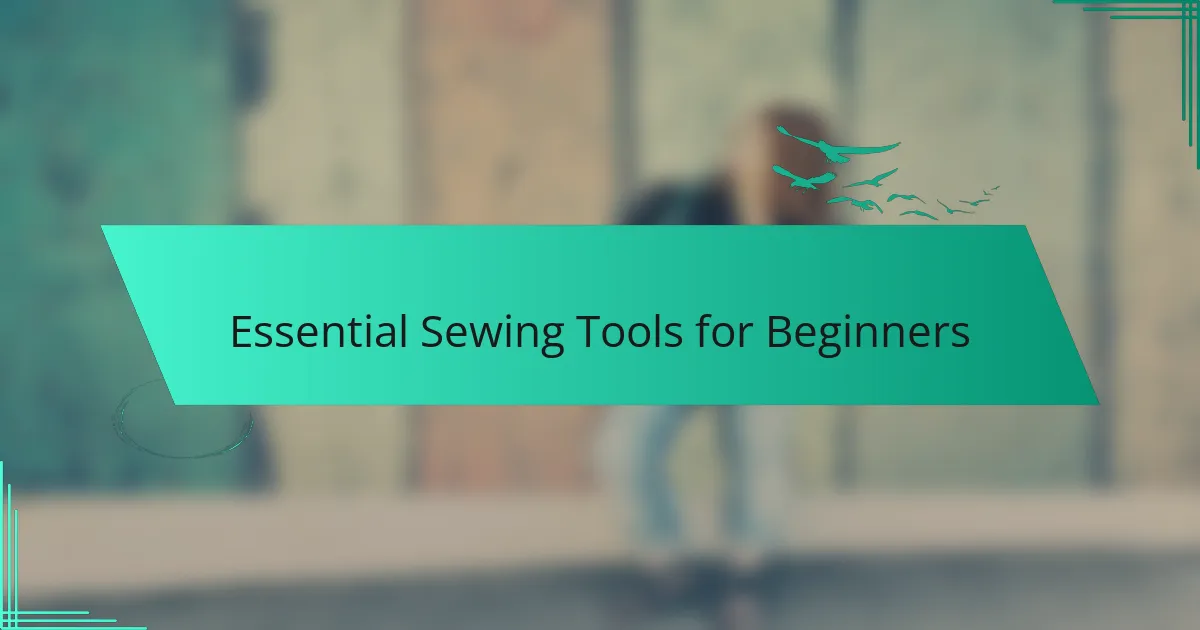
Essential Sewing Tools for Beginners
When starting out with sewing, having the right tools can make a world of difference. I remember the first time I picked up fabric shears; they felt like an extension of my creativity. A good pair of sharp scissors is essential for cutting clean lines, and trust me, you’ll want to avoid frayed edges as you work on those beautiful vintage patterns.
Measuring tools are another must-have. I often use a flexible measuring tape and a clear ruler, which help me ensure precision while aligning my fabric. Nothing beats the feeling of knowing everything is measured correctly, especially when you’re trying to recreate a 1940s silhouette that deserves to be just right.
Don’t overlook the importance of pins and needles. I can still recall my early days of sewing when using good pins helped keep the fabric in place and made my seams neat. Think about it—what’s a vintage garment without those perfect seams? Investing in quality sewing pins will make your journey a lot smoother, and isn’t it just exciting to see everything come together as you sew?
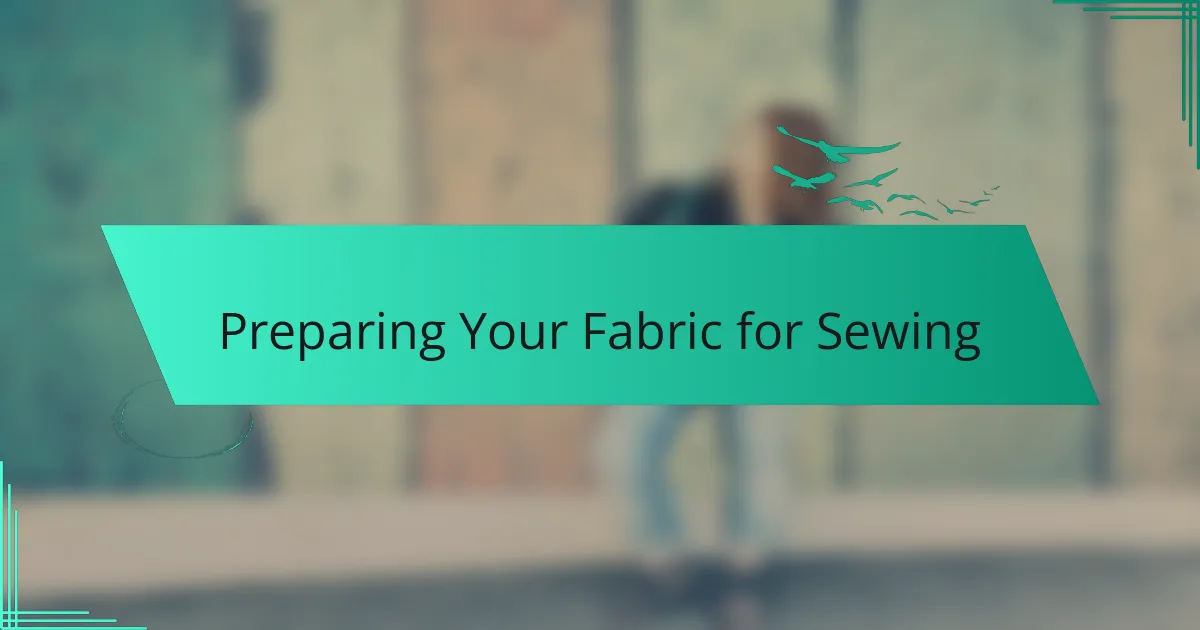
Preparing Your Fabric for Sewing
Preparing your fabric properly is key to achieving that authentic 1940s look. I remember the first time I started working with vintage patterns; the fabric treatment felt almost like a ritual. Washing, ironing, and pressing your fabric not only ensures it’s clean but also allows the fibers to relax, which is crucial for a smooth sewing experience.
When I pick my fabric, I always touch it. The feel of the material can inspire how I approach the pattern. You might be surprised by how much a simple pre-washing can change the way fabric drapes.
Here’s a quick comparison of the different fabric preparation methods I often consider, based on my own experiences:
| Method | Benefits |
|---|---|
| Washing | Removes any chemicals, pre-shrinks fabric, enhances softness |
| Ironing | Creates a smooth surface, prevents slipping while cutting, helps identify any imperfections |
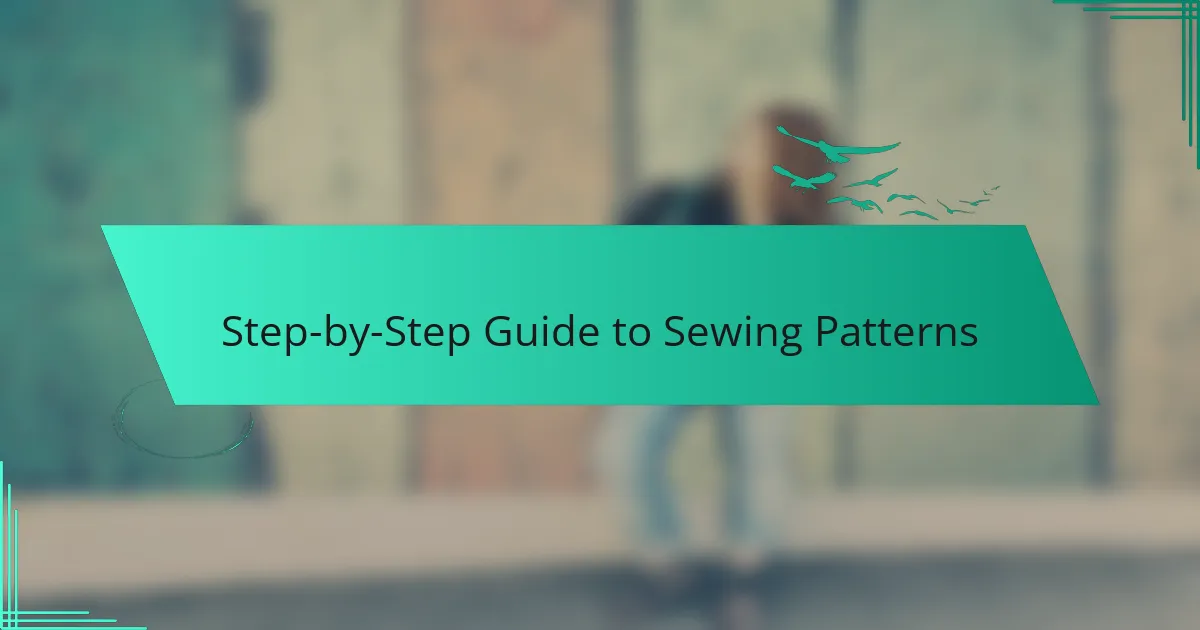
Step-by-Step Guide to Sewing Patterns
Sewing patterns can feel a bit daunting at first, but breaking it down step by step makes the process much more manageable. I clearly remember the moment I first laid out my vintage pattern pieces on the fabric. It’s almost like laying the groundwork for a fascinating story. Start by carefully cutting out your pattern pieces, always following the grainline—this is crucial for ensuring that your final garment hangs beautifully.
Once you’ve cut your fabric, the next step is to pin those pattern pieces together. I often take a moment to visualize how the final piece will come together. It’s essential to pin with intent, making sure everything is secure to avoid shifting as you sew. I can’t tell you how many times I’ve had to rip seams because I overlooked this step; it’s both frustrating and a learning opportunity. Have you ever experienced that moment when everything just seems to fall into place? It’s such a rewarding feeling when you get it right!
Finally, when you’re ready to sew, I recommend starting with a simple stitch and ensuring your machine is set correctly for your chosen fabric. Trust me, taking this precaution saves a lot of heartache down the line—it’s like setting the foundation for a sturdy house. I recall my early days of sewing, feeling a mix of excitement and nerves as I pressed that foot pedal for the first stitch. As I watched the fabric transform under my hands, I knew I was on my way to creating something truly special.
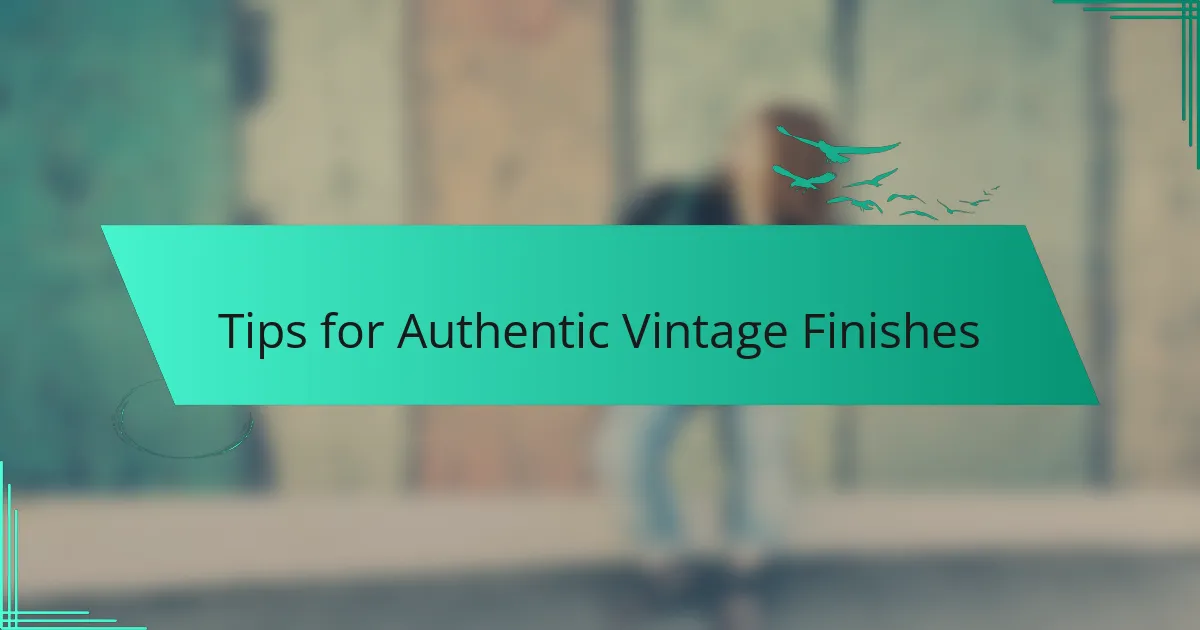
Tips for Authentic Vintage Finishes
When it comes to achieving authentic vintage finishes, the details truly matter. I recall my first attempt at sewing a 1940s dress, and how I was fascinated by the idea of using hand finishing techniques. Techniques like hand-stitched hems or bias binding were not just traditional; they added a personal touch that machine finishes just can’t replicate. I still find it rewarding to sit down with needle and thread, recalling all the women before me who poured their love into their garments.
Pressing your seams properly is another essential tip for vintage authenticity. It seems like a simple task, but I remember how much of a difference it made once I learned to press as I sewed rather than waiting until the end. This careful attention transforms the fabric, helping it retain a crisp, tailored look that is characteristic of the 1940s. Have you ever noticed how much sharper a garment can look after a thorough pressing? The transformation is often quite magical.
Finally, don’t shy away from incorporating vintage notions, like period-appropriate buttons and closures. I vividly remember scavenging at antique markets for unique button designs that echoed the styles of the ’40s. These small yet impactful details can elevate your project, making it truly unique. Isn’t it fascinating how such simple additions can connect us even more to the style and story of that era?
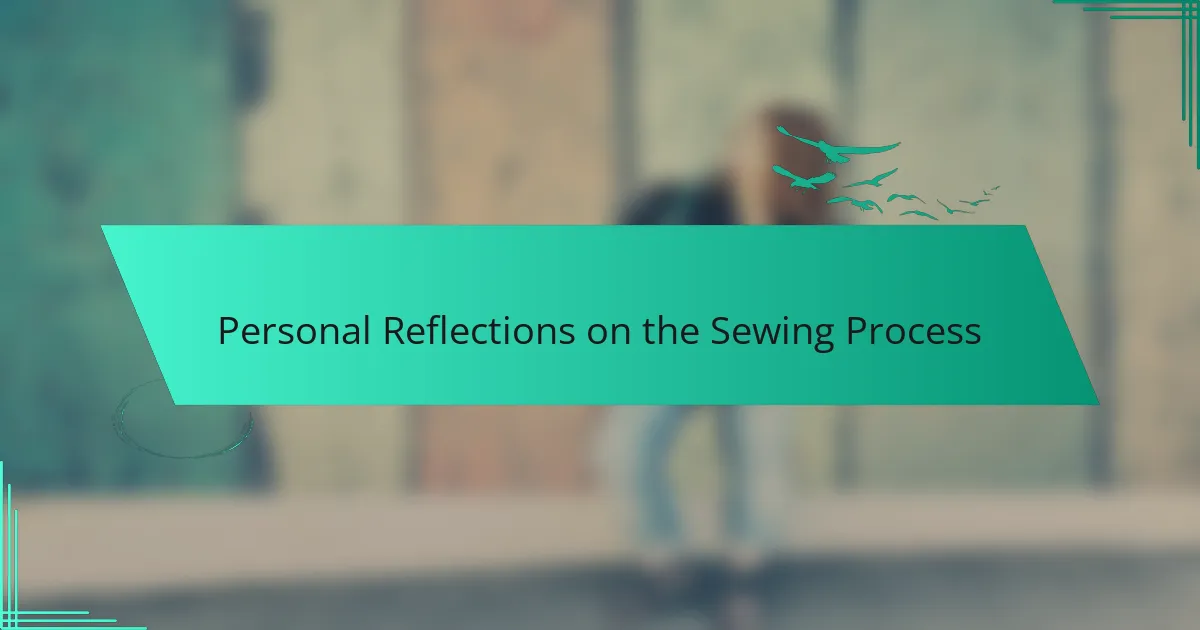
Personal Reflections on the Sewing Process
Sewing authentic 1940s patterns has been an eye-opening experience for me. I often find myself reflecting on the patience required during this journey. I remember the first time I sat at my sewing machine, feeling a mix of excitement and trepidation. Each stitch felt like a connection to the past, and I was reminded that creating something by hand allows for personalized expression. Isn’t it enriching to know that the effort we put into each garment can become a part of its history?
The emotional highs and lows of sewing can be quite tangible. There were moments when fabric didn’t behave as I expected, and I felt frustration creeping in. Yet, each challenge has taught me resilience and problem-solving skills, which are invaluable not only in sewing but in everyday life. Have you experienced that poignant moment of triumph when everything finally clicks into place? I believe it’s those moments that keep us coming back, fueling our passion for vintage fashion.
What truly stands out for me are the memories woven into the fabric as I sew. I imagine the women of the 1940s navigating their lives, dressed in the clothes I’m recreating. It’s as if I can feel their spirit guiding my hands. The realization that I am continuing their story gives my sewing a deeper significance. Don’t you think that makes our creative journey even more worthwhile?
